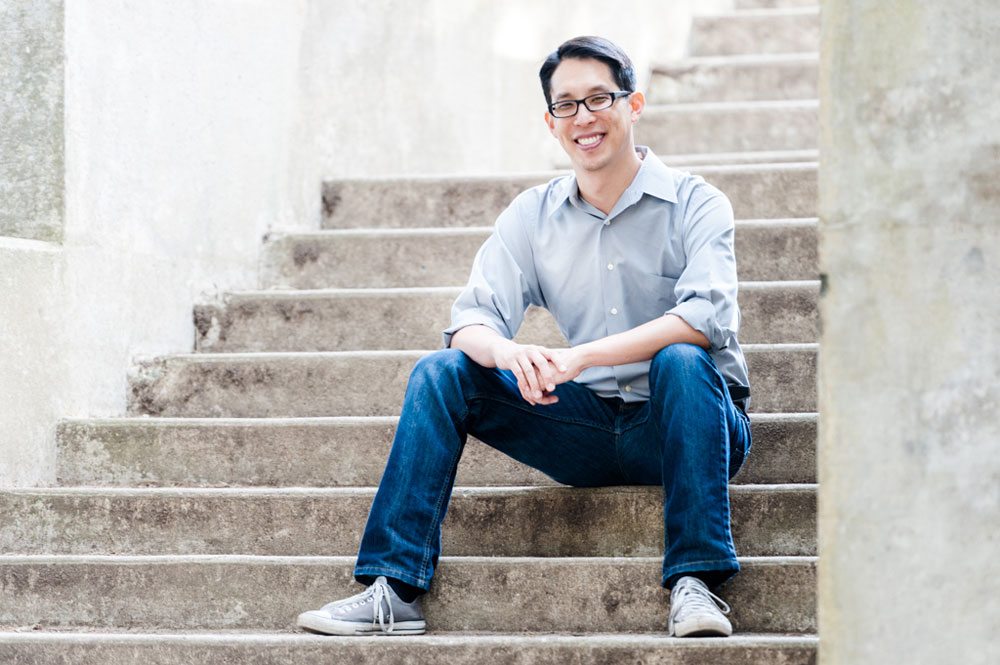
10 years ago, a new publishing company known as First Second Books published a comic book called American Born Chinese by Gene Luen Yang. Since then, First Second and Yang have both continued to create amazing comics and rack up a lot of achievements.

American Born Chinese was published in 2006, but prior to that Yang had already published a few comics—some comics online at HumbleComics.com (now home to GeneYang.com) and Gordon Yamamoto and the King of the Geeks, later republished in the Animal Crackers collection by Slave Labor Graphics. When asked if he sees the publication of American Born Chinese as a natural progression in his career as a cartoonist, Yang replied: “The response to American Born Chinese by readers, librarians, bookstore owners, and teachers was just crazy. Life-changing, really. It did not feel like a natural progression to me. It felt like somebody had strapped a jet pack to my back.”
American Born Chinese is a collection of interweaving stories focusing on different characters: Jin Wang, a Chinese kid who moves to a new school and feels totally out of place—he wants to be American, but everyone wants to lump him in with the newly-immigrated Wei-Chen; the Monkey King, kung-fu master, who wants to be a god; Chin-Kee, the worst possible Chinese stereotype (buckteeth and squinty eyes and terrible accent and all), who shows up to ruin his cousin Danny’s life. It’s a fascinating look at being Chinese in America, and it’s no wonder this book was able to fuel that jet pack ride, a trip that had actually started much earlier.
Yang has been drawing pretty much his entire life—since he was two years old, according to his mother. He started drawing comics in the fifth grade, mostly in the Disney style because he had aspirations to be a Disney animator. Although that didn’t happen (or maybe I should say, it hasn’t happened yet), his illustrations still carry a little of that influence, and you could easily imagine his characters brought to life in traditional cel animation. His inspiration in cartooning wasn’t limited to Disney. Yang says of his influences: “I can give you a list as long as my arm. I love Lynda Barry, Osamu Tezuka, Jeff Smith, Jay Stephens. I’m also heavily influenced by the cartoonists I came up with: Derek Kirk Kim, Lark Pien, Jason Shiga, Thien Pham, Jesse Hamm, Raina Telgemeier, Kazu Kibuishi.”

It wasn’t always easy being a cartoonist in an immigrant family, though. In the book Level Up—a story about videogames and Asian parenting—Yang and artist Thien Pham took that experience and crafted a story about the son of a gastroenterologist. The dad wants him to follow his footsteps, but the son just wants to play videogames. Although it’s not strictly autobiographical, it does have its roots in Yang’s own life. As Yang relates in a cartoon, “The Secret Origins of Level Up,” his father pushed him to do “something practical” instead of drawing cartoons. Thank goodness he stuck with cartooning!
Now that Yang has found success in cartooning, I asked what his father thinks now: “My dad is pretty happy now. Ha ha. But my brother’s a medical doctor. I’m not sure I’ll ever be able to top that. I mean, my dad is impressed with some of my stuff, but I’m pretty useless when he has digestion problems.”
Yang isn’t afraid to tackle tricky subjects: in 2013 he published a pair of books, Boxers & Saints, examining the Boxer Rebellion from two different perspectives. In my interview with him about the books, he said:
As an Asian American, I grew up in both Eastern and Western cultures. When I read books about the Boxer Rebellion, I found myself torn. I couldn’t decide who the protagonists were. And that’s why I did two books for this project. The protagonists in one are the antagonists in the other.
Then in 2014, he and Sonny Liew revived the Green Turtle, the first Asian-American superhero, with their book The Shadow Hero. The original Green Turtle, created by Chu Hing in the 1940s, had some controversy surrounding his creation—but Yang and Liew made him definitively Chinese-American in their re-telling.
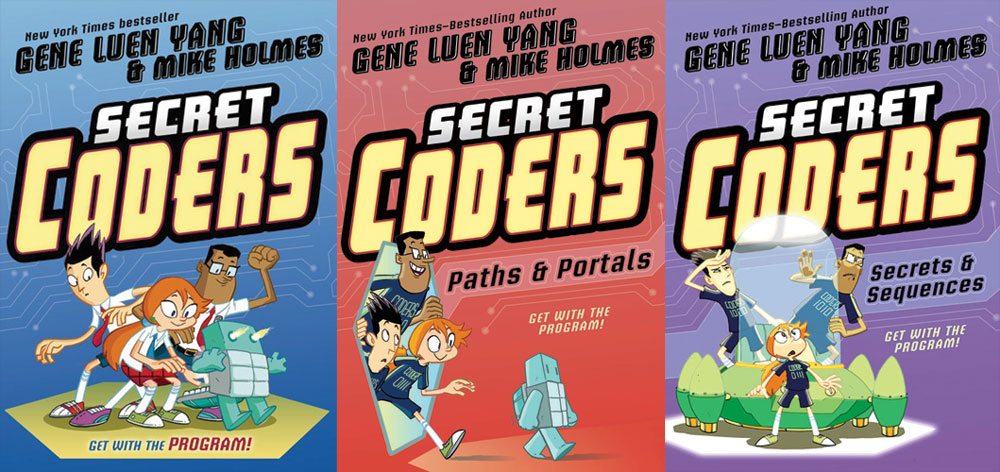
Aside from drawing cartoons, Yang is also a teacher. He taught computer science at a high school for many years, though he left that job a year and a half ago. He was able to work in his cartooning, too, teaching a Computer Art course with a partner teacher about the process of making comics. And even though he’s no longer teaching at the high school, he continues to teach computer science through a graphic novel series, Secret Coders, illustrated by Mike Holmes. The second volume of this six-volume series was just released last month, with a third due in March 2017.
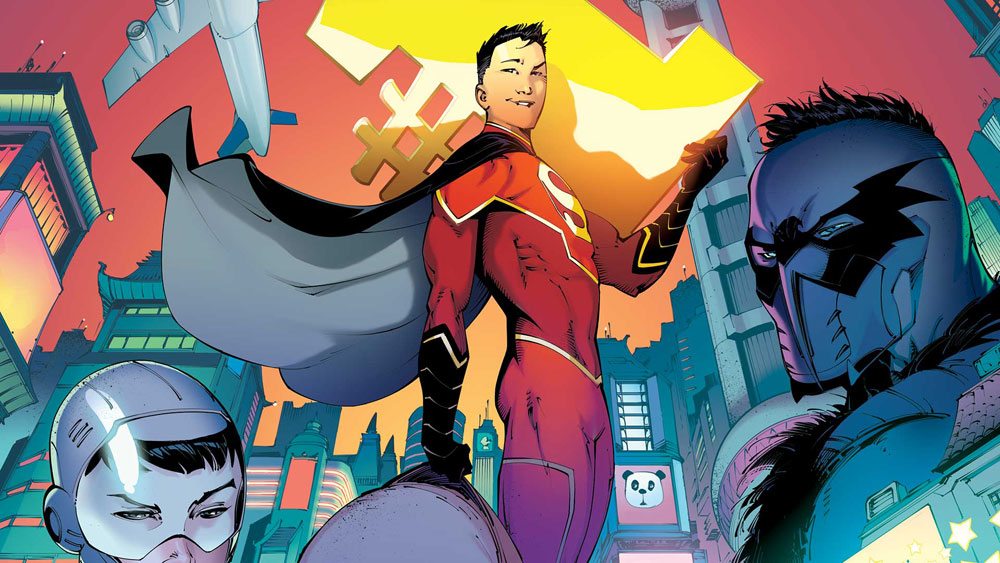
Aside from his own stories, Yang has worked on some well-known series, too: he wrote the Avatar: The Last Airbender series for Dark Horse Comics, and started writing Superman for DC Comics in 2015—and is now writing New Super-Man, in which a Chinese kid from Shanghai inherits some of Superman’s powers. Yang said that writing his own characters versus somebody else’s characters are “very different experiences, but I enjoy all the different ways comics are put together. With my own stuff, I get full control. When I’m partnered with somebody, I can learn from another creator. When I’m working on someone else’s character, I get to participate in a larger storytelling tradition.” Even right from the start, when picking a name for his Chinese Super-Man, Yang had to take a different approach than he would if it were his own character—read his blog post to see how “Kenan Kong” came to be.

That jet-pack ride started ten years ago hasn’t ended, either. Earlier this year, Yang was named the National Ambassador for Young People’s Literature. Yang has been enjoying his time as ambassador so far, meeting kids and hearing about what they’re reading. As he explains, “We are still feeling things out. The ambassadorship hasn’t been around for that long. It was started by the Library of Congress, the Children’s Book Council, and Every Child A Reader in 2008. We’re still experimenting with how to get more kids reading and kids reading more.”
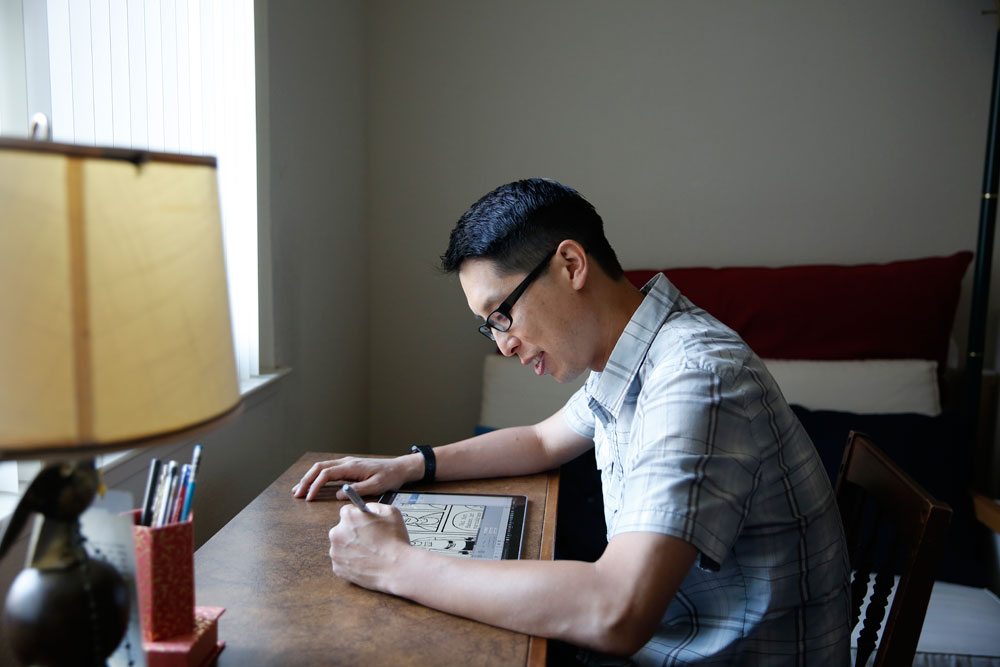
And to top it off, last week Yang was awarded a MacArthur Grant. Did he imagine, a decade ago, that this is where he would be now? The answer was a resounding NO: “So many crazy things have happened, for me personally and for the comic book industry. The graphic novel category is thriving. It’s more diverse than ever in terms of representation, subject matter, and genre. Not to say that we’re where we should be yet, especially with respect to representation, but I see signs of hope everywhere.”
Check out this excellent video from the MacArthur Foundation:
My kids definitely have enjoyed Yang’s books, and they’re not alone in that. But what about Yang’s own kids? What do they think of his new title, or of his comics? “Ha ha. They think it’s okay. It’s really, really hard for me to impress my kids. I’ll give them one of my books, and after they finish it, they’ll tell me, ‘It was okay. But Raina’s better.’ I have an easier time impressing my kids’ friends than my kids.” I guess maybe it’s a universal rule that kids of a certain age think their own dads are kind of dorky.
I always love finding out what my favorite authors are reading, so I asked Yang what his favorite comics are now, and what he is currently reading? His current favorites: “Hope Larson and Rafael Albuquerque are killing it on Batgirl. Ben Percy and Otto Schmidt’s Green Arrow is just awesome. I just read an ARC of Real Friends, an upcoming graphic novel from the dream team of Shannon Hale and LeUyen Pham. That book stayed with me for days.” And his current reads: “Just finished an issue of Steve Orlando and Brian Ching’s Supergirl! Thumbs up. If you’re a fan of the show, go read the comic! I’m two chapters into Meg Medina’s Burn Baby Burn. I’m enjoying the heck out of it so far.”
Where does Yang see himself in another ten years? “I hope I’ll still be doing what I’m doing, but maybe in different ways. I hope I’m still involved in education. And I hope I’m still making comics.”
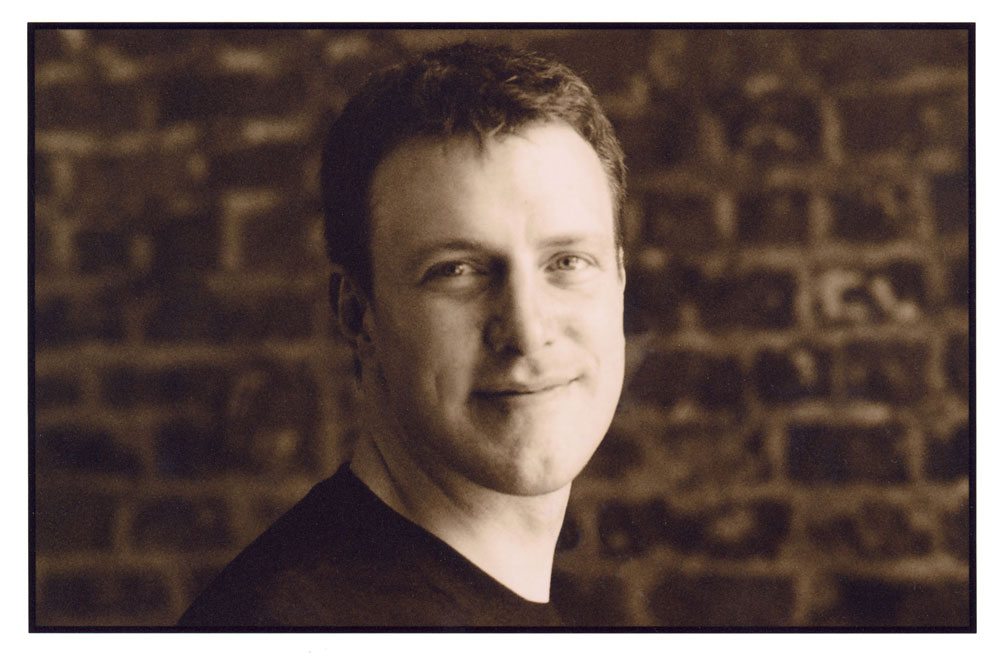
With the anniversary of First Second Books, I also had a brief Q&A with Mark Siegel, the Editorial Director.
GeekDad: Happy 10th anniversary to First Second Books! How did First Second begin—what were your hopes for it when you started?
Mark Siegel: Thanks! We’re graduating to a new chapter as a publishing house. Ten years means lots learned from lots of mistakes. And some successes—but the mistakes do teach us the fastest. First Second began as a couple sheets of paper with a vision for a unique kind of home for comics authors. There were hopes and dreams and a bunch of specific ingredients, like a worldwide talent pool; a growing collection in each major age category; a super broad span of genres, themes, and styles; a constantly refining editorial process; and other things. And today, these ingredients are where First Second is, and takes aim at the next ten years’ vision.
GD: When I look back at the list of titles First Second has published, I see a lot of my favorites on there. Did First Second take off right from the start, or did it take a while to find its footing?
MS: Well in some ways we bolted out the gate with great things. Very early on we had Laika by Nick Abadzis, Robot Dreams by Sara Varon, American Born Chinese by Gene Yang—and many others which are still mainstays of the First Second collection today. There’s been a lot of trial and error, and we do try to learn from errors, and never stop trying new things. Some go thunk, some soar, but it stays fresh and we never feel like we’re looking around at the competition to see what we should do. Now I should say: we’ve been fortunate inside Macmillan to have real support for a long-term project, not just a quarterly return. That allowed us to keep at it long enough until we really broke through.
GD: American Born Chinese was one of the first books you published. How did you select that “freshman class” of books?
MS: Yes, American Born Chinese was in our first year in the marketplace, in 2006. What it did for the graphic novel and how it transformed a part of American publishing—happened so fast, it was magical. Those first seasons of First Second, I followed my nose, I followed my heart. In many cases I’d sign up someone whose work I loved, and they brought me to their friends. In the case of Gene Luen Yang, it was Derek Kirk Kim, a fantastic talent—who badgered me into looking at his buddy Gene’s project! Then Gene introduced us to Thien Pham, to Lark Pien, to Jason Shiga—to a bunch of other good people. So it was a mix of instinct and serendipity.
GD: In the past couple years, First Second has also started publishing picture books, like Ben Hatke’s Nobody Likes a Goblin. Do you see yourself expanding into other types of books as well, or do you consider picture books to be something like a comic book for younger readers?
MS: Picture books and graphic novels are close cousins. Some books blur the line between those categories. It’s not too much of a stretch for us to carve out a bit of picture book space for comics authors who want to flex different creative muscles. So yes, we have some lovely picture books, but as you say, it’s with comics creators, and a graphic novel mindset that we approach them.
GD: What do you look for when you’re selecting stories now—what makes a book a “First Second” title?
MS: There’s a personal voice. There’s storytelling ambition. There’s love and joy in the work, sometimes. Or a deep need to tell this story, and no other. It’s not one genre, or one age category, or one approach to comics. First Second is ideally a great big umbrella, an aegis for all kinds of comics creators. Hard to say what makes a First Second title—as long as that’s not a fixed thing, we’re not sclerotic, right?
Both Gene Yang and First Second have had an incredible decade, and I hope that jet-pack ride continues long into this next decade, too!


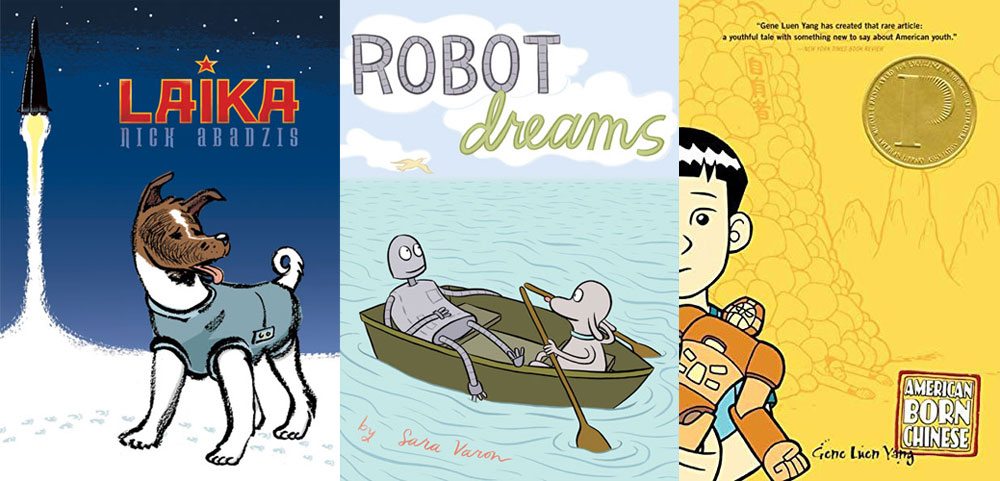
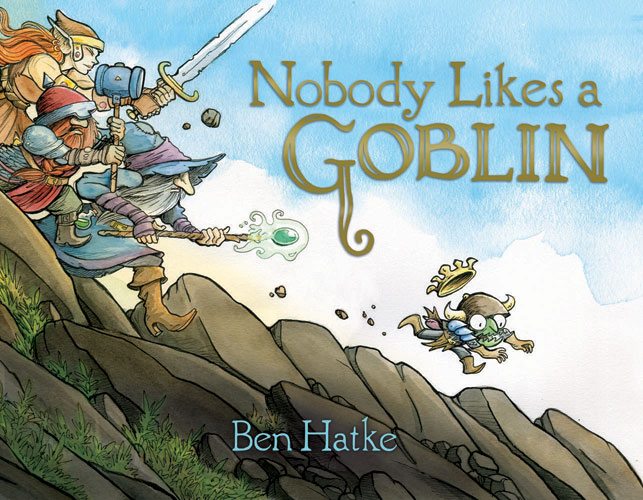

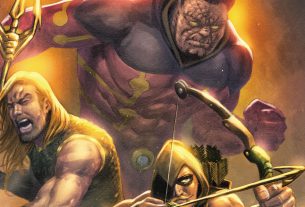


However, a few of the well-liked costume themes are television characters,
Movie characters, Historical folks, Funny costumes, horny, classic, superheroes costumes.